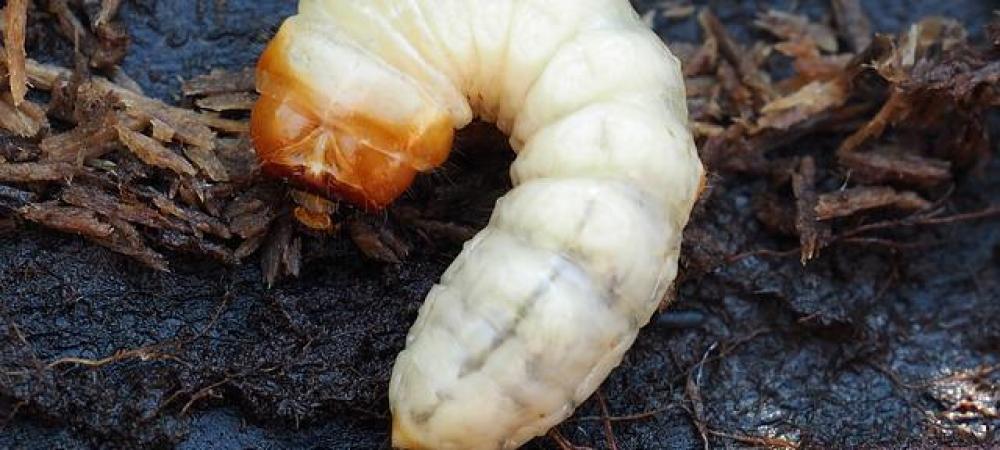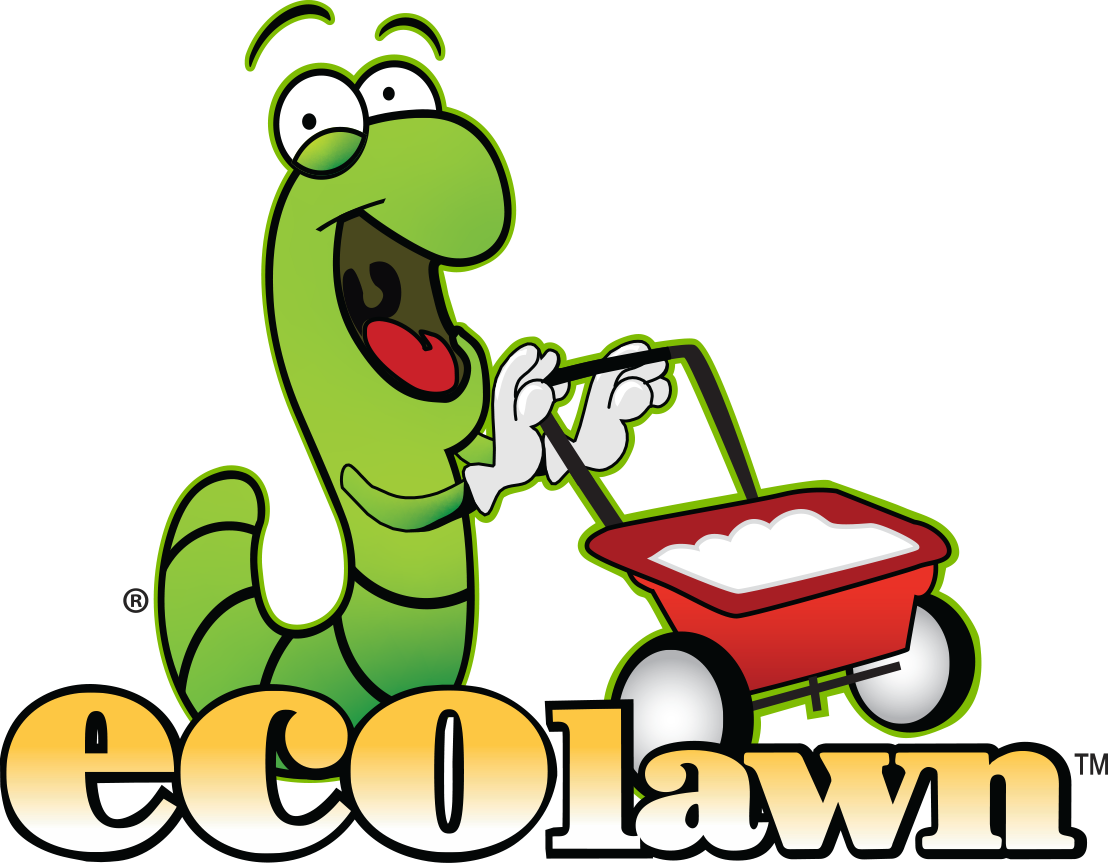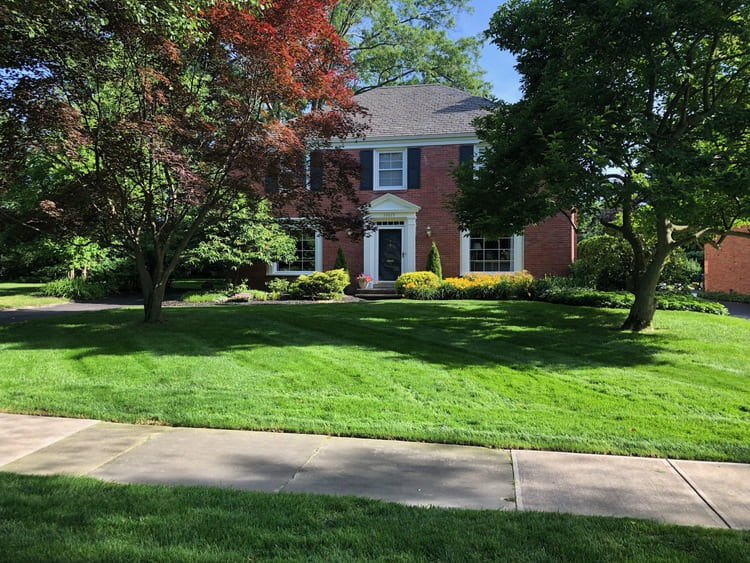Home » Lawn Pests »
How to Spot Lawn Grub Damage in Your Lawn and What to Do About It

Lawn grubs can damage your beautiful yard in a season. And I see it all the time in Willoughby, OH, and other northeastern, OH, lawns
Maybe you’ve heard of, or even seen, Japanese Beetles (also called June Beetles) feeding on your roses. Boy, how frustrating it is to see your prized plants and flowers destroyed by those darned beetles! They start out as white larvae buried in your lawn, otherwise known as grubs.
In this article, we’ll tell you everything you need to know about lawn grubs, including:
Grubs Vs. Other Lawn Conditions
If I have Grubs, Do I Have Moles?
Grubs 101 for Northeast, Ohio Lawns
Grubs in Willoughby, Ohio, and the surrounding neighborhoods come from several varieties of beetles. Each spring, beetles are attracted to certain plants around your home and throughout the entire neighborhood, too! Roses, purple leaf plum, hosta, viburnum, and weeping cherry are favorites, and there are plenty of others! The bad news is many Willoughby, OH, and other northeastern, OH, lawns look beautiful with these plants.
So, the challenge starts early each year when the beetles feed on the leaves of these plants. You can watch them skeletonize the leaves and even see them feeding. And then they mate.
This is when we see lots of those beetle traps—they look like little green bags and people put them under the plants where the beetles are feeding.
This is a mistake! This just brings more beetles that do more damage. One of our teachers suggested getting beetle traps and giving them to a neighbor you don’t like!
The female flies at night, depositing eggs as she goes in search of her next meal. This ritual continues for several weeks, and the timing is a little different for each beetle variety.
Those eggs she’s dropping hatch into the young grub worm a few weeks later. This is what makes them such a serious threat. The juvenile grubs feed on the roots in your grass. The baby grubs feed on the roots in your grass. That’s a real problem because the roots are the lifeline that provides food to your lawn, and without them, your lawn dies!
Lawn Grub Damage
Left untreated, the grubs feed on the roots in your lawn, often destroying large sections. This can cause a few issues:
- Damaged areas will need to be removed and reseeded.
- The damage can cost thousands to fix.
- Because we use special grass seed for the repair, it will leave patchy, uneven areas in your lawn.
Signs of Lawn Grub Damage
You can spot signs of grub damage by looking for the following:
- Thinning, yellowing grass.
- Large, irregular shaped brown areas.
- Soft, spongy grass that pulls up easily like rolling carpet.
- Increased activity from skunks, raccoons, birds, and chipmunks pulling back the sod, almost like a rototiller was used on your lawn.
We see lawn grub damage all the time in Willoughby, OH, and other Northeast, OH, neighborhoods. However, grubs are not the only problems we find in Ohio lawns.
Grubs Vs. Other Lawn Conditions
Grubs can be mistaken for other lawn issues. These include drought stress, too much shade, lawn fungus, chinch bugs, and sod webworms. So, how can you tell for sure it is actually grubs?
Large, brown spots also appear with drought stress—grass leaves will also turn a dull gray color. The grass blades may begin rolling and folding over.
Fungal infections can cause your lawn to look healthy in some areas but dry in others. Even after a soaking rain, this unevenness remains. It also has a distinct smell, much like the smell of mold.
Testing For Lawn Grub Damage
Make sure the damage to your turf is caused by pests. To do this, pull back on a piece of sod in the dry area.
You’ll find the grass pulls up like a carpet. You’ll see hundreds of grubs right under the sod! Grubs are off-white, C-shaped, and brown at one end.
Most people think the head is brown. The brown is at the rear end. This is how you know which type of beetle is responsible for the damage.
Finding a few grubs is normal and not a huge cause for concern. Depending on the size of your lawn, you may want to look in several different areas. If you are able to count more than 10 or more grubs per square foot, you have a serious infestation!
Introduce a Friend to Ecolawn™
If you’re a happy customer, help spread the love by introducing your family and friends. We appreciate your support and thank you for being a loyal Ecolawn™ customer!

Pro vs. DIY Lawn Grub Control in Ohio
When Ecolawn is servicing your Ohio lawn, you don’t have to worry about grubs damaging it. Ecolawn’s organic grub control program includes our Guaranteed Grub Preventer treatment.
We usually add this treatment during your second or third lawn feeding visit between June and August. Other companies may not even suggest this treatment, and others may not stand behind it. At Ecolawn, you won’t have grub damage, or it’s on us!
If you’re treating your own lawn in Willoughby, Ohio, or another Northeast Ohio town, it can be a challenge to know what to apply and when. Late spring to early summer is a good rule of thumb. Follow package directions very carefully as products are expensive and you’ll want to maximize your success. When you have questions, we’re happy to help—even if you aren’t a client.
If I have Grubs, Do I Have Moles?
We receive many calls during spring and fall. Customers are sure their lawns contain grubs due to the presence of mole tunnels. They assume there must be grubs.
Moles are actually in search of earthworms and decaying organic matter like thatch. They don’t target grubs, although if one falls in their path, they’re not particular.
Moles are not an indicator of grubs—stay tuned for an upcoming blog about moles and how they damage Willoughby, Ohio, lawns.
Lastly, if you see beetles destroying your landscape plants, please give us a call. We can treat your plants to limit the damage and help break the cycle.
FOLLOW US FOR MORE LAWN CARE TIPS
